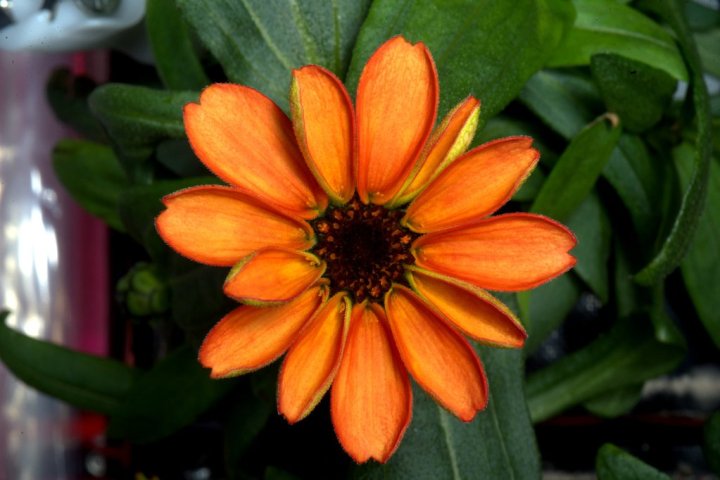
While such news may at first sound frivolous, possibly conjuring up images of astronauts taking time out from their usual duties to prettify the International Space Station with pleasing arrangements of pink chrysanthemums and cerise anemones, the consequences of the breakthrough are in fact of huge significance.
The experiment’s success spells good news for NASA’s long-term ambition of deep-space travel as it means astronauts embarking on such missions will be able to consume the produce of edible flowering plants, such as tomatoes.
Astronauts aboard the ISS last year succeeded in growing lettuce in microgravity conditions, a feat that, with this latest breakthrough, suggests future space travelers had better really like salad if they intend to put their name down for a Mars trip.
Growing flowers in space is a far trickier proposition than other types of plant as they’re more sensitive to conditions and take longer to develop, NASA said.
Indeed, getting the zinnia flowers to bloom proved challenging for ISS astronaut Scott Kelly. The American has been updating his Twitter followers on the progress of the flowers, which were grown using Veggie, NASA’s specially designed “space garden.”
Kelly revealed last month that the experiment was in trouble after issues with humidity and air flow resulted in mold, causing some of the flowers to die.
Determined not to give up, the green-fingered astronaut carefully cut away the moldy parts and altered the flowers’ watering routine. The zinnias responded positively and over the weekend Kelly proudly showed off a photo (top) of “the first ever flowers grown in space.”
The fact that the experiment didn’t go exactly according to a plan will actually prove useful for scientists back on the ground.
“While the plants haven’t grown perfectly, I think we have gained a lot from this,” NASA scientist Dr. Gioia Massa said, adding, “We’re learning both more about plants and fluids and also how better to operate between ground and station. Regardless of final flowering outcome, we will have gained a lot.”
The Veggie team member also said recently that the farther and longer humans travel from Earth, “the greater the need to be able to grow plants for food, atmosphere recycling and psychological benefits,” explaining that plant systems like this “will become important components of any long-duration exploration scenario.”
However, the scientists seem happy to take their time with the project – the first tomato seeds won’t be taken to the ISS until 2017 at the earliest.

